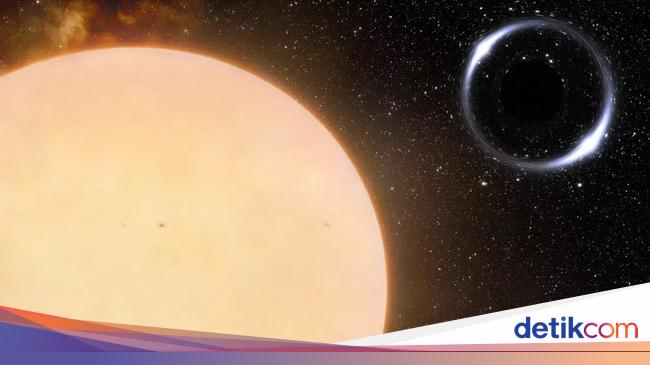Astronomers discover black holes or black hole closer to Earth! It is “only” 1,560 light years from Earth.
This black hole was named Gaia BH1 by astronomers. Its size is 10 times more massive than the Sun, as reported by space.com, November 4, 2022, written by detikEdu, Monday (11/7/2022).
The black hole is located in a binary system where the other members are sun-like stars. The black hole star Gaia BH1 is a similar distance from Earth to the Sun. This makes Gaia BH1 very special.
“Despite many claims about the detection of such a system, nearly all of these findings have since been debunked,” said study lead author Kareem El-Badry, of the Harvard-Smithsonian Center for Astrophysics in Massachusetts and the Max Planck Institute. for Astronomy in Germany.
“This is the first clear revelation of a Sun-like star in a large orbit around a stellar-mass black hole in our galaxy,” El-Badry said.
Astronomers estimate that the Milky Way has around 100 million of them black hole stellar mass, an object that swallows light five to 100 times greater than the sun.
Their small size makes these objects relatively difficult to detect, especially with telescopes. Recently gravitational wave detectors have been more successful in detecting, finding evidence of mergers involving these objects.
And what scientists see tend to be “binary X-rays,” black holes that extract material from a companion star in the accretion disk. Accretion is the growth of a massive object through the attraction or collection of matter through gravity, particularly gaseous matter.
Now this rapidly orbiting dust and gas is emitting X-rays, high-energy light that some powerful telescopes can observe.
“Our follow-up observations of Gemini (the Gemini North and the Keck 1 telescope in Hawaii, ed) confirm beyond any doubt that the binary contains a normal star and at least one dormant black hole,” said El- Badry.
“We have not been able to find a plausible astrophysical scenario that could explain the observed orbits of systems that do not involve at least one black hole.”
If the invisible object in Gaia BH1 were a star, for example, it would be much brighter than its companion and therefore easier to see. But none of the team’s observations revealed any clues to a second star in the system.
The Gaia BH1 system is interesting, he continued, and not just because it’s relatively close to Earth. (Close in the cosmic pattern, the Milky Way’s famous spiral disk is about 100,000 light years wide.) The research team isn’t sure how stars and black holes got to where they are today.
The mass of Gaia BH1 indicates that the star that died and gave birth to it must have been very large – at least 20 solar masses or more. Such giants only live a few million years and expand significantly before disintegrating and becoming a black hole.
This study is about discovery black hole The closest to Earth was published in the Monthly Notice of the Royal Astronomical Society on November 4, 2022.
Label:
black hole
Earth
Sun
bintang
galaxy
Milky Way galaxy
astronomer
astronomy
Watch videos”Scientists obtain images of the black hole at the center of the Milky Way“
[Gambas:Video 20detik]
(nwk / erd)


